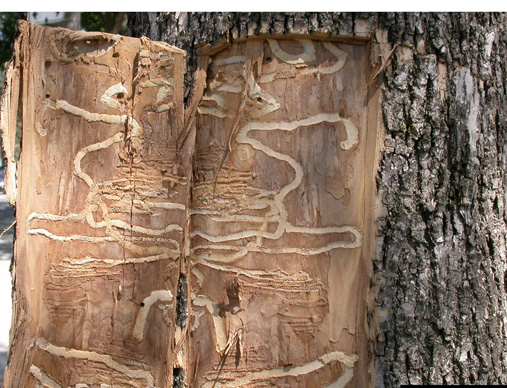It will take almost $10 million to launch a credible citywide defense against the dreaded emerald ash borer, city officials reported last week, and that won’t stop the bug.
About $9.5 million will pay for nine years of pesticide treatment for about two thirds of the city’s estimated 20,000 ash trees and removal of the rest, Forest Decker, parks superintendent, told the city council.
It will cost about another $50,000 for an education campaign, he said, and $500,000 to open a brush disposal site north of the river. The bug has been found in seven places there and a state quarantine as of March forbids brush from the northern area going to the disposal sites south of the river.
Private owners of about 380,000 ash trees in Kansas City are on their own but could help slow the borer by paying to treat their trees as well, Decker said.
The problem is actually far broader. Officials say there are up to seven million ash trees in the nine county metropolitan area.
The borers are also undoubtedly south of the river in Kansas City but have not been found yet, Decker said, and the effort to slow them will be citywide.
To do nothing will result in the loss of all 20,000 city ash trees and a cost of $15 million to replace them, he said.
The invasive borer has spread widely and killed up to 100 million ash trees since it was found in the Detroit area a decade ago. Attempts to eliminate it failed in other cities but the treated trees slow the spread, Decker said.
The best time to treat is in the spring and Kansas City should attack then, he said.
It would help if citizens treated their trees as well, he said, but there are probably not enough treatment companies currently to handle all that work.
Much information on the pest is at a national site, and a state site.
Decker gave the council more bad news. The drought this year killed from 8,000 to 10,000 city trees of all kinds, large and small.
“We’re getting way behind in removing those trees,” he said, and it will cost $1 million to replace them.
Asked if he had any good news, Decker said, “We had some really good fall color this year.”




Who’s talking